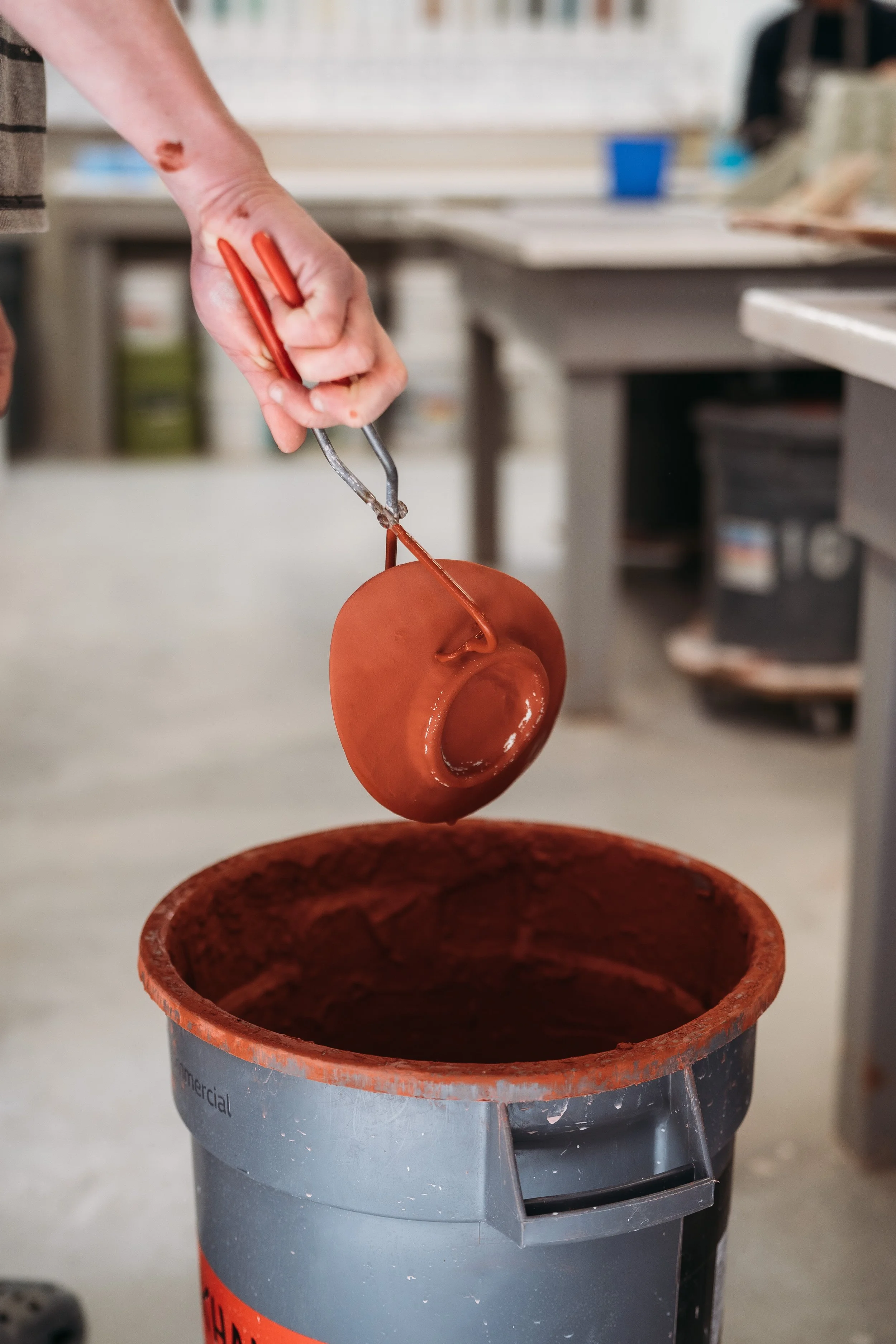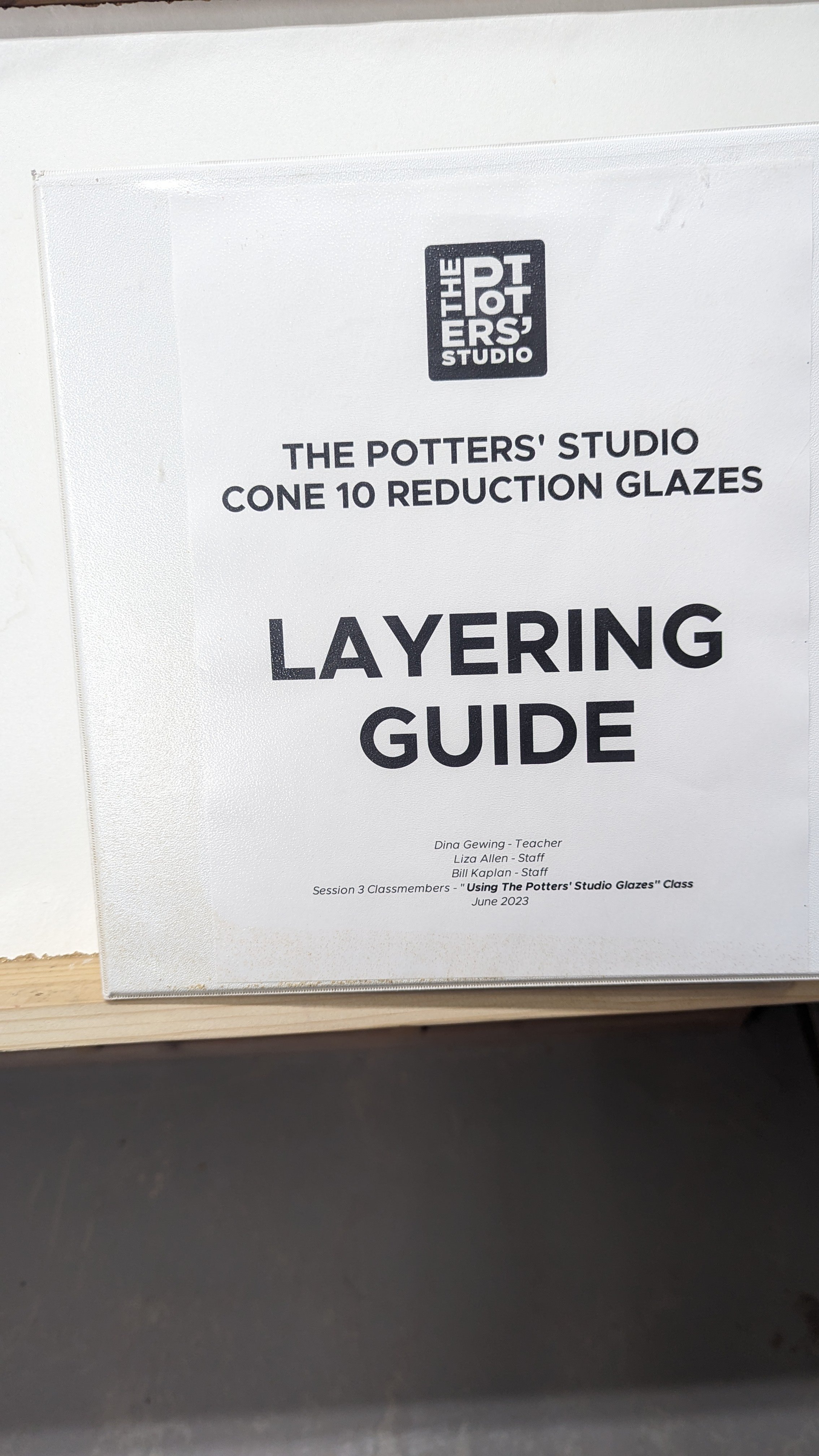What the Flux!
LAYERING GLAZES
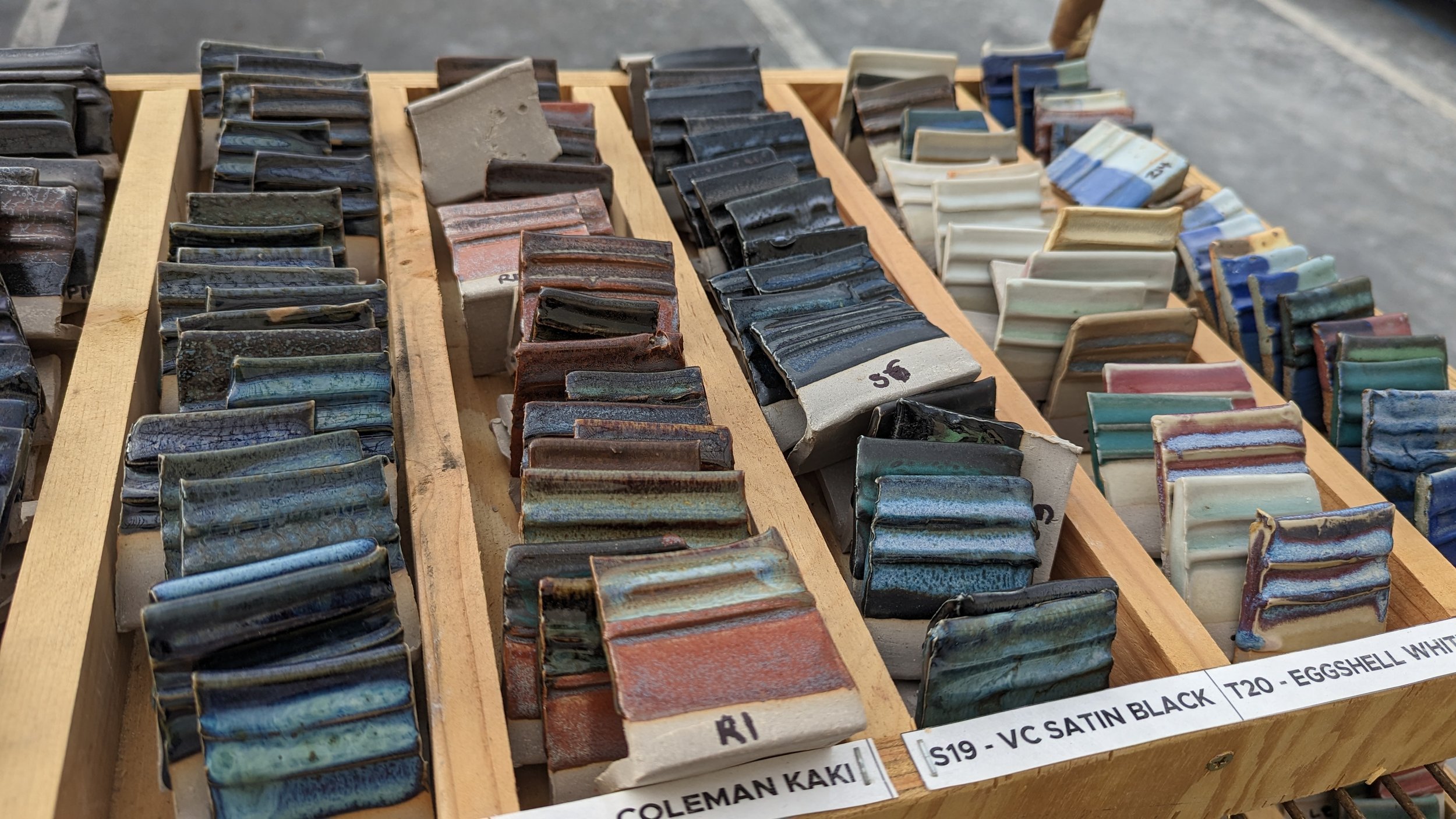
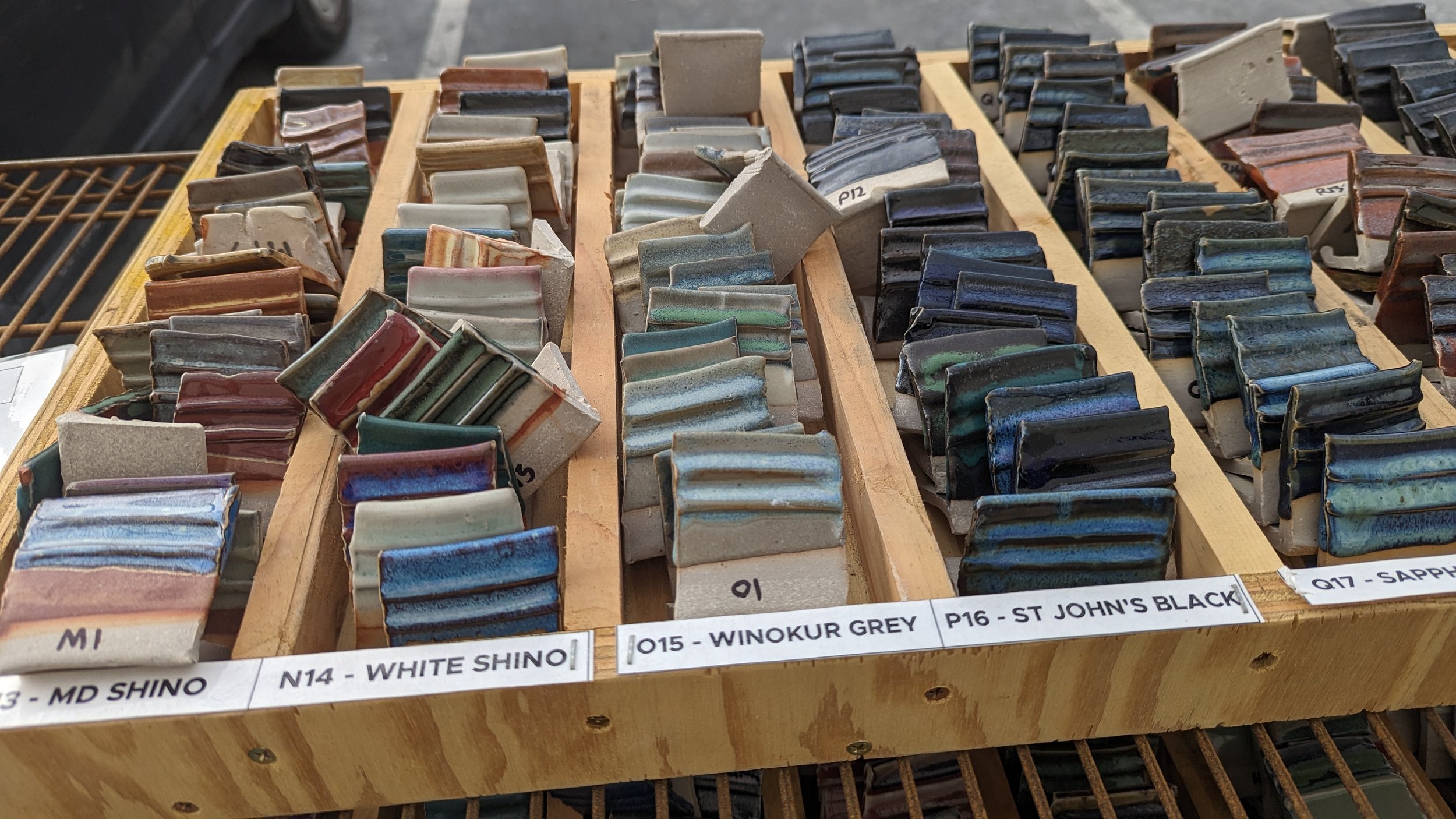
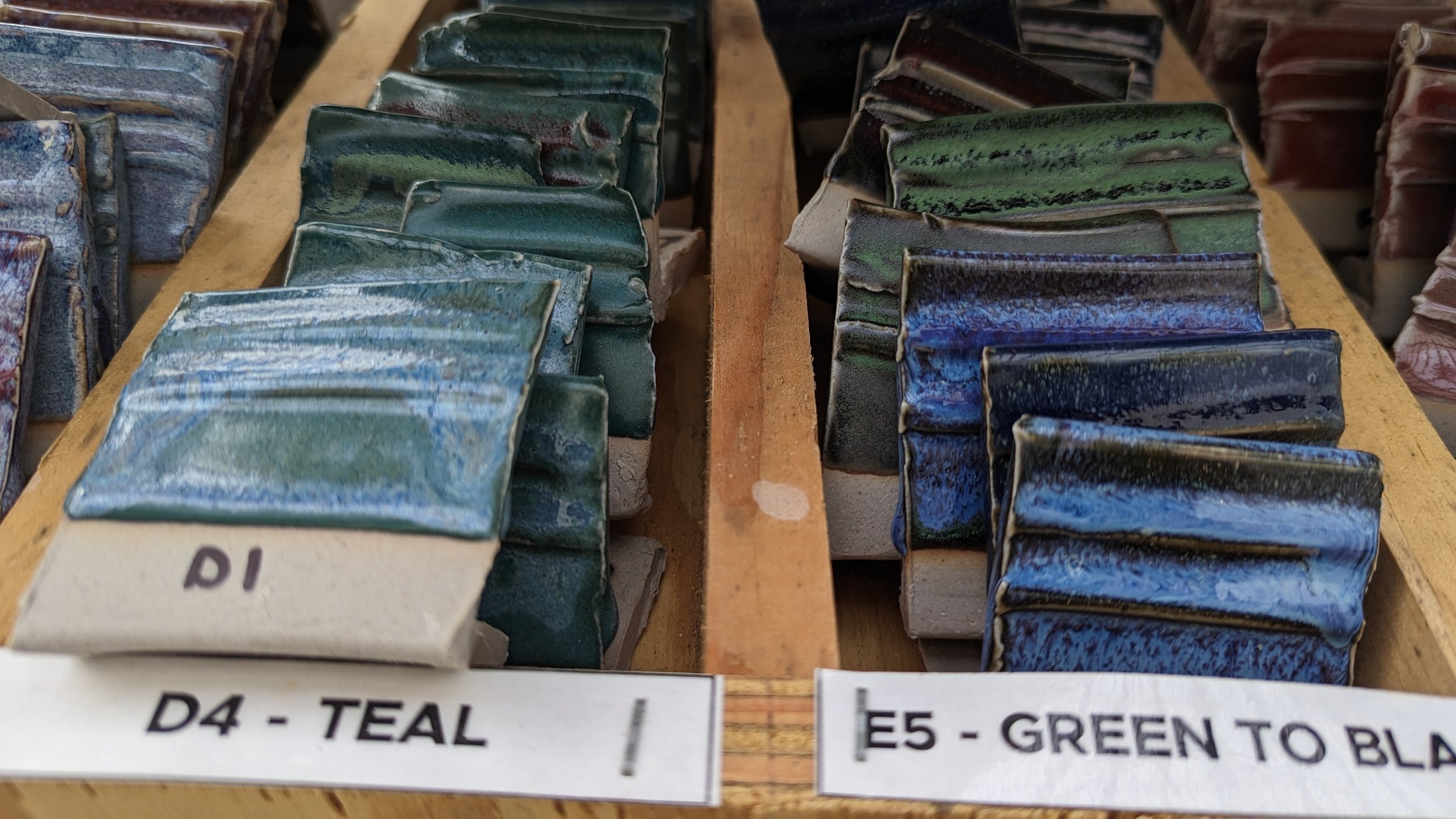
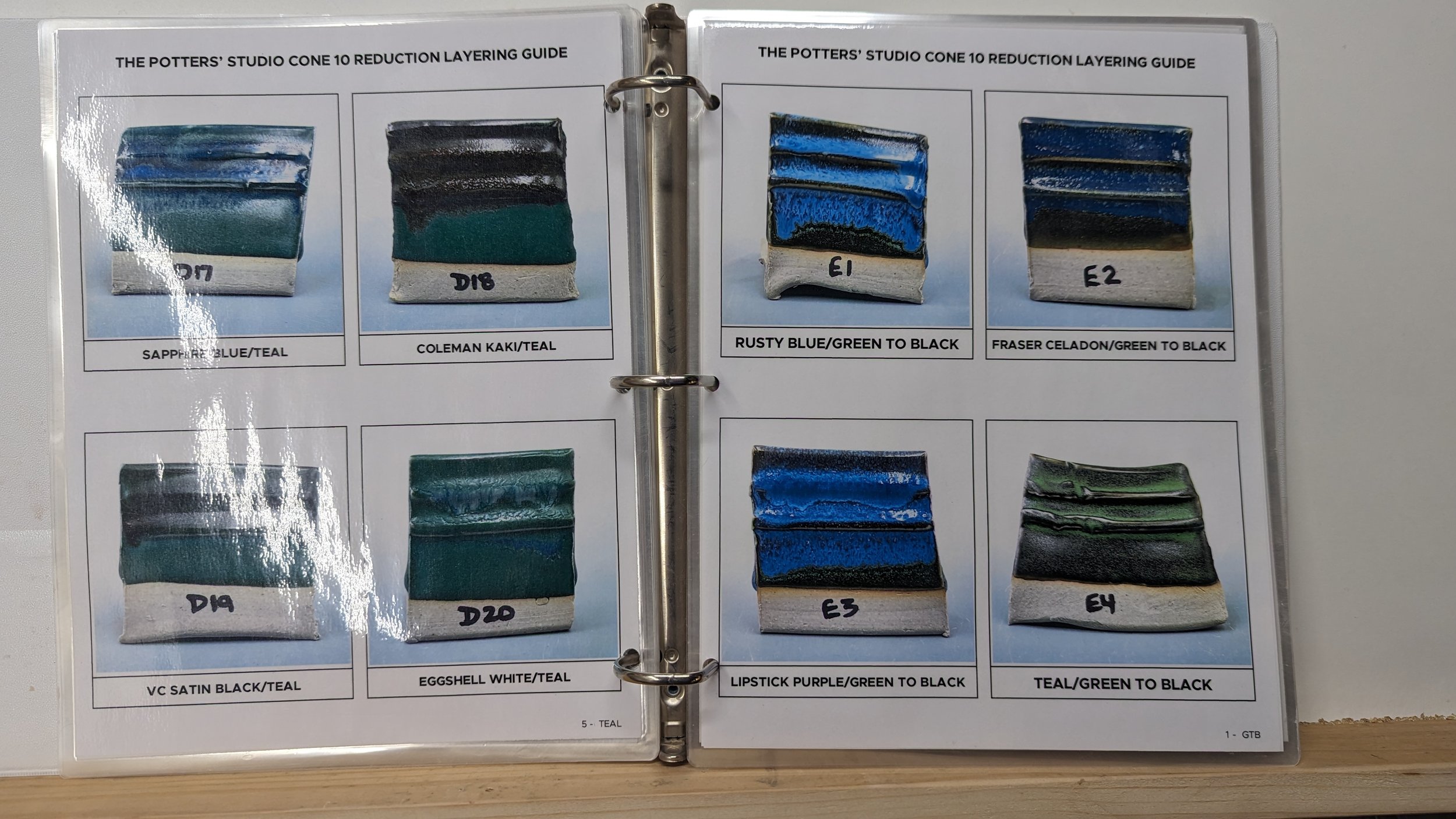
Dina Gewing’s “Using the Potters’ Studio Glazes” class recently took on the challenge of creating test tiles of all 20 TPS glazes layered over each other. The students in the Session 3 class, with the assistance of staff members Liza Allen and Bill Kaplan, created 400 test tiles and a Layering Guide reflecting photographs of all 400 test tiles. The Guide provides some basic instructions on how to obtain the results represented by the 400 test tiles; but notwithstanding the Layering Guide, there are still steps each potter must take when layering glazes to ensure you achieve wonderful and not disastrous results.
A rule of thumb to remember when glazing is be sure to commit as much time to glazing your piece as you did to create the piece. People frequently work diligently on the creation of their pot, mug, bowl or sculpture; but when it comes time to glazing the piece some people will pick a glaze or two, dip, and wait for the Kiln God or Goddess to deliver a masterpiece. If the finished product is exactly what they expected, then they simply walk away with a smile on their face never once thinking about what it really takes to have a successful glazing and layering experience. Unfortunately, they will take the glazing process for granted and never realize that perfect practice and attention to detail will lead to a successful glazing/layering experience. Here are just a few reminders on how to achieve glazing success 95% of the time.
Now that Dina’s class has done most of the work of creating 400 test tiles so that you know what you will get when you combine Coleman Khaki with Rusty Blue and Bill, the Glaze Guy, has memorialized those 400 test tiles in the handy dandy Layering Guide available for all in the Glaze Room, you can achieve similar results if you remember to follow these steps.
Be sure your bisqueware is clean and dry. You may want to wait thirty (30) minutes after you have cleaned your bisqueware to make sure there is nothing that will prevent or discourage glaze penetration.
Be sure to thoroughly mix the glaze. If the glaze is not properly mixed the colorants will have settled to the bottom and you will not get the desired result. If you have difficulty mixing the glaze, ask Staff for assistance and they can use the electric mixer to make sure the glaze is mixed. The Glaze Guy mixes every glaze thoroughly every week.
Some glazes require longer dipping time for proper glaze penetration. If you are using the same glaze for multiple pieces you will have to constantly agitate the glaze to make sure you are getting the same glaze with each dip. If you are layering glazes remember each time you add another glaze you are changing the chemical makeup. When you test take notes and test conservatively.
Remember to consider your clay body when deciding on which glazes to use. What looks great on B-Mix will not look the same on Black Mountain or Rods Bod.
Balance your spontaneity with your logic as you create your test tiles and remember to bring your patience to the process.
Be curious but try to become a little more scientific if you want to increase your rate of success and consistency.
Being scientific won’t interfere with your creativity but will reduce the anticipation you experience with each kiln opening.
If you approach glazing scientifically and with patience you will open each kiln with preconceived excitement. If on the other hand, your finished piece is not up to your personal standards you have several options.
Give it away to someone who appreciates the union of your vision and skill.
Introduce the hammer of no regret and repurpose the resulting pieces into a mosaic.
Leave it on your curb and give it a new home. Everything you make has a right to live.
Embrace it as a reflection of your energy and spirit.
Finally, always remember as you navigate your way through the layering experiment to pay attention to the movement in your selected glaze and always, always, always use a cookie.

